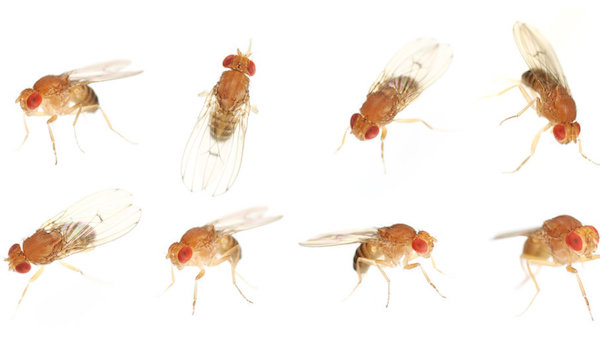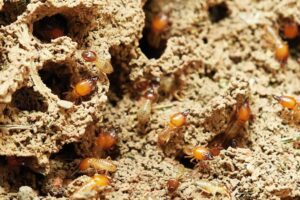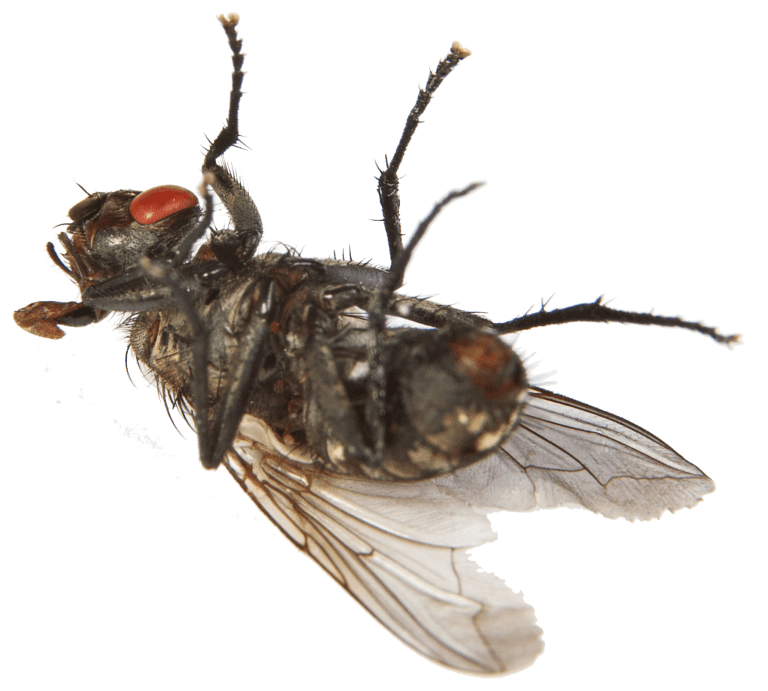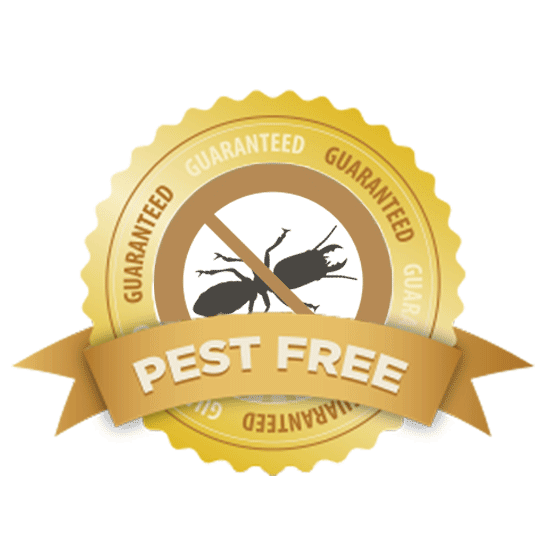
Fruit flies (also commonly call gnats), seem to come from nowhere and then suddenly they’re everywhere. Annoying as they are, these are some of the simplest, most innocuous creatures, and you’re not powerless against them, even here in Florida where people grow fruit in their yards year-round.
The most notable color on a fruit fly is its red eyes, though a few varieties do not have this feature. They are tiny insects–only and eighth on an inch when mature, tan in color, ovular in shape, and their antenna have feathery bristles (get out your magnifying glass!)
WHAT CAUSES FRUIT FLIES IN THE HOUSE?
There are several ways these tiny pests can make their way into your home. They’re good fliers, they’re small, and they’re spawn are excellent hitchhikers. This means that they can fly right in through the front door while you are coming and going, or through any other tiny minuscule openings into your home, such as small screened window tears.
Even if you are meticulous, one of the most common ways for fruit flies to enter the home is by arriving on fruit, as eggs. Ripening fruit is where fruit fly eggs like to hatch, and then presto! Flies. Once they start reproducing in your home, you have an infestation. If their food source is consistent, they can remain active year-round.
Fruit flies in the kitchen
An old beer can in the recycling bin, fruit that’s going by, a juice spill—all of these are kitchen gold to fruit flies. Also, your kitchen is likely where you keep you fruits and vegetable, maybe some of them on the counter, and that is exactly where fruit flies like to lay their eggs. At the first sign of fermentation, they feel welcome to burrow in and leave eggs to create future generations of fruit flies. Sludge in the garbage disposal or around the drain can also be a suitable place to deposit eggs.
Fruit flies in drains
Drains are a favored place for fruit fly breeding, since they are often a place where both fragments of food and moisture collect. They can seem to be entering through the drain, as they exit from there in numbers, but these aren’t new intruders, they are likely hatchlings (and not to be confused with drain flies, also called moth flies for their “furry” moth-like appearance). You might think you can wash flies down a sink drain, but the streaming water doesn’t necessarily trouble them at all.
Fruit flies in the bedroom
Fruit flies stick around where they can find something to eat. If fruit flies seem to be hanging around your bedroom, do a thorough clean, and especially look for old spills. A sticky spot or an old spill in a carpet might just be offering enough sustenance to keep fruit flies sated.
HOW TO KEEP FRUIT FLIES OUT
There are a few simple steps you can take to try to prevent fruit fly infestation in the first place. First, use quality window screen and caulk to seal potential entry points to your home, and make sure that you don’t have pipes or faucets that are leaking. Take the garbage out regularly and make sure that your garbage cans outdoors have secure lids are not kept right up against your house.
For indoor maintenance, make sure your food and drink are stored properly, whether in the refrigerator or in sealed containers. Don’t leave fruit or vegetables out on the counter, and thoroughly rinse containers that held anything from yogurt to soda to wine before discarding. Don’t purchase over-ripe fruit. If you see a piece of fruit that is starting to go by, for example, a banana, throw it in the freezer to make banana bread later!
HOW TO GET RID OF FRUIT FLIES
If it’s too late for prevention, it’s not too late for a cure. To rid yourself of an infestation, simply set trap, and then remove potential food sources with a deep clean.
Fruit fly trap
Commercial fruit fly traps are fast-acting, ready-to-use, and designed to lure adult fruit flies to their end. These are usually transparent, so you can see the level of the fluid inside and determine when you need to refill or replace the trap. They are most effective when stationed close to a logical breeding site (e.g. your fruit bowl, compost, or perhaps your sink).
How to get rid of fruit flies with vinegar
White vinegar is popular in home made traps because, as a product of fermentation, it attracts the flies in a similar way as fermenting fruit. Vinegar and a few drops of dish soap together can be effective at killing fruit flies. Make sure that you aren’t proving a feeding trough, though! A paper cone, taped in place over a cup or jar opening can make any easy opening for the flies to enter, and a harder target as they look for an exit. This is a simple, homemade fruit fly trap.
Fruit flies spray
Commercial sprays are also available to discourage fruit flies from resting on otherwise viable surfaces. Peppermint oil is the ingredient to focus on if you want to try a homemade spray and you aren’t offended by a strong smell of peppermint!
ARE FRUIT FLIES HARMFUL?
These little guys have no bark and no bite, but they are unsanitary since drains, sewage, and garbage are among their favorite haunts. They can pick up germs, viruses, and bacteria, then spread them around your home and deposit them onto your food, etc.
As mentioned earlier, without a food source and a breeding site, fruit flies cannot do their thing. So, if you are willing to keep your home utterly spotless for a while, yes, fruit flies will die off on their own. Yet, it may take some time, since fruit flies reach maturity in a little over a week, at which point they are equipped to produce up to 500 eggs… Armed with that knowledge and these easy measures that you can take to eliminate these pests proactively, why would you just wait them out? Fruit flies can start becoming a pest of your past today. And if DYI solutions are overwhelming or they just aren’t doing the trick, consider contacting a Command Pest Control for profession for help.





